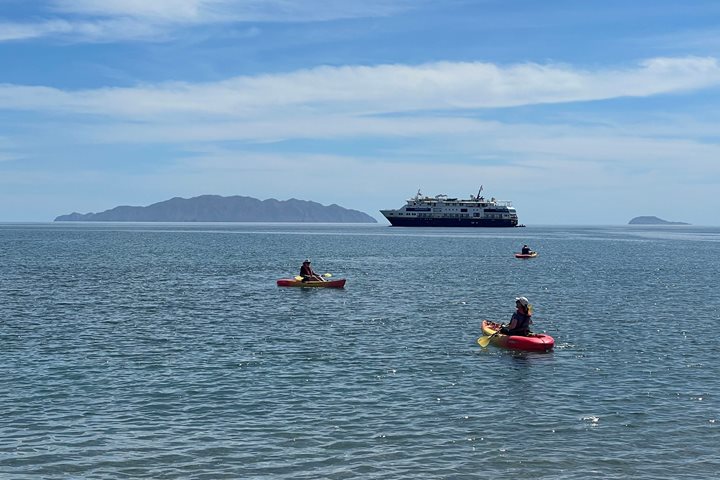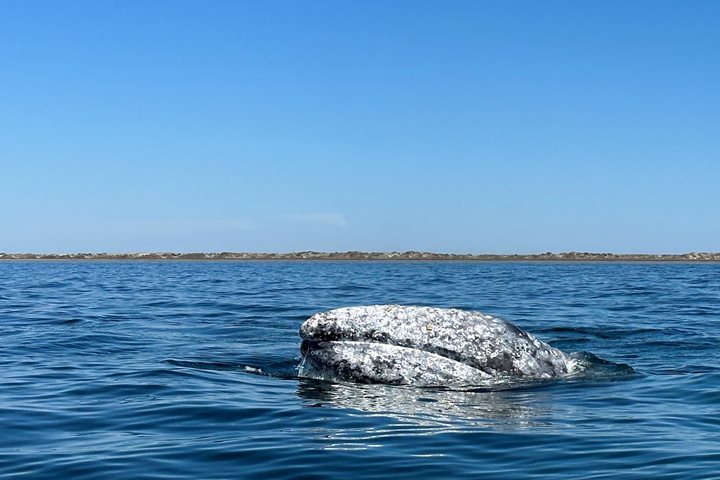During the second full day of our expedition exploring the wonderful peninsula of Baja California and its surrounding waters, we visited two different sites on Magdalena Island. Magdalena is the largest island of the chain at approximately 55 miles. It is also the most diverse with a couple portions that are called “exotic terranes” by geologists. These portions were made by metamorphic rocks born far to the west in the Pacific, and they are much older than anything else in the peninsula. They arrived on an eastbound tectonic plate before colliding with the North American plate.
During the morning, we had the chance to explore one of those rocky portions of the island at a place known as Belcher Point. The point is named after British naval officer and admiral Sir Edward Belcher who stopped briefly at Magdalena Bay while circumnavigating the world in the 1800s. We divided into several groups and went hiking in the hills. We learned about the wonderful adaptations made by plants and animals so they can survive in the desert. Other guests explored the beach, finding a great variety of shells, bones, and other treasures along the shore.
During lunch, National Geographic Venture repositioned to another part of the island and anchored in front of some of the beautiful sand dunes that make up the majority of Magdalena Island. There we went ashore and hiked over those dunes to the opposite shore, a gorgeous semicircular beach, 10 miles in diameter. The beach’s official name is Santa Maria Bay, but it is better known as Sand Dollar Beach. We admired the beautiful sand dunes and learned about the hardiness of the island’s former inhabitants, the Guaycura people. Evidence of their presence can be seen everywhere in huge shell middens. Black murex snails and all kinds of clams and oyster shells cover the dunes. Many of the shells are covered by a thin film of desert varnish, a manganese compound that accumulates over long periods in dry areas. The Guaycuras lived in a portion of what is now the Mexican state of Baja California Sur. Unfortunately, they were decimated by diseases introduced by the Spaniards. The last woman was named María Ignacia Melina. She died in La Paz in 1892. The Guaycuras were hunter-gatherers. They utilized every possible resource to survive, including the abundant shellfish of Magdalena Bay. Shellfish of many kinds are still an important resource in the bay, and many fishermen make a living today by harvesting pen shells, winged scallops, and murex snails, among many others. But it is another marine invertebrate that gave its name to San Dollar Beach: the sand dollar. We all enjoyed the beautiful beach, and we marveled at the vast numbers of the five-inch sand dollars. This wild, untouched beach was the perfect place to end another great day exploring Baja California.
IMAGE: Sand dollar detail at Sand Dollar Beach on Magdalena Island. Photo by Carlos Navarro







